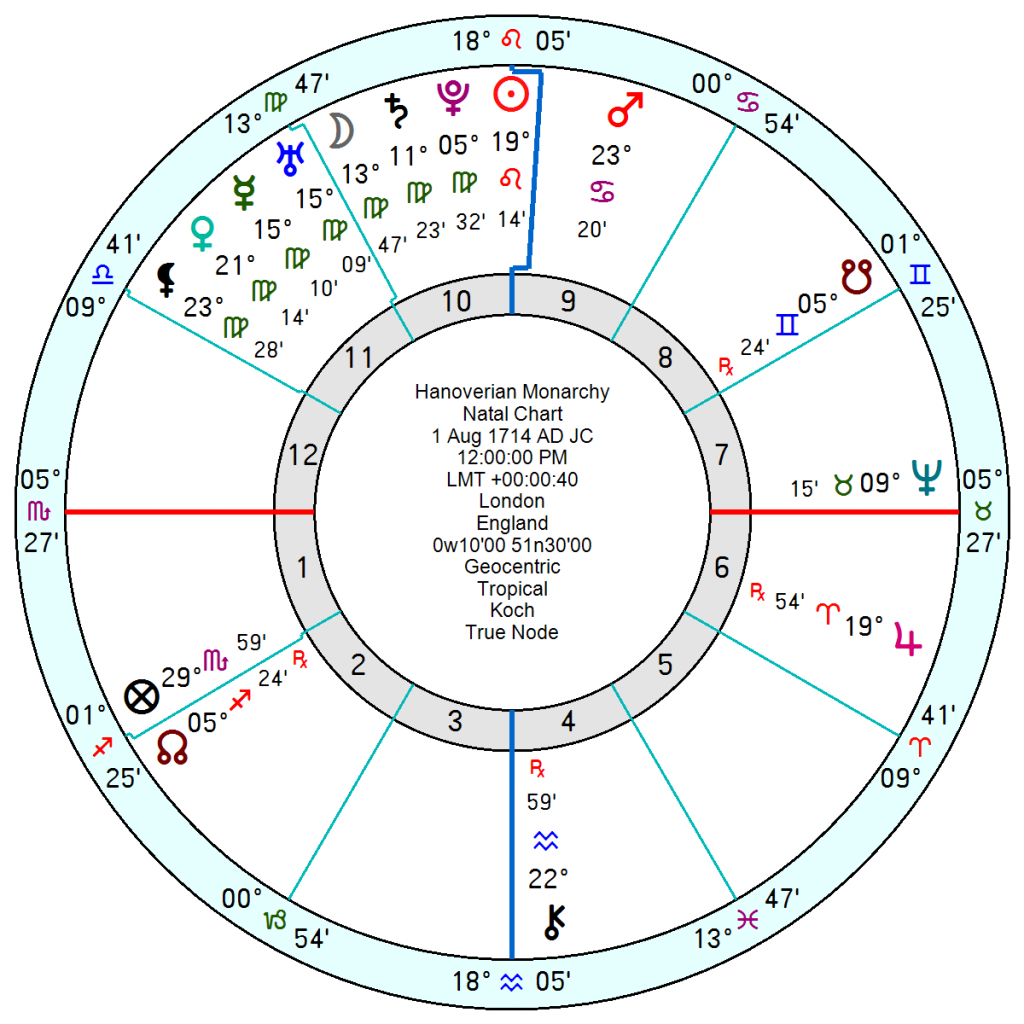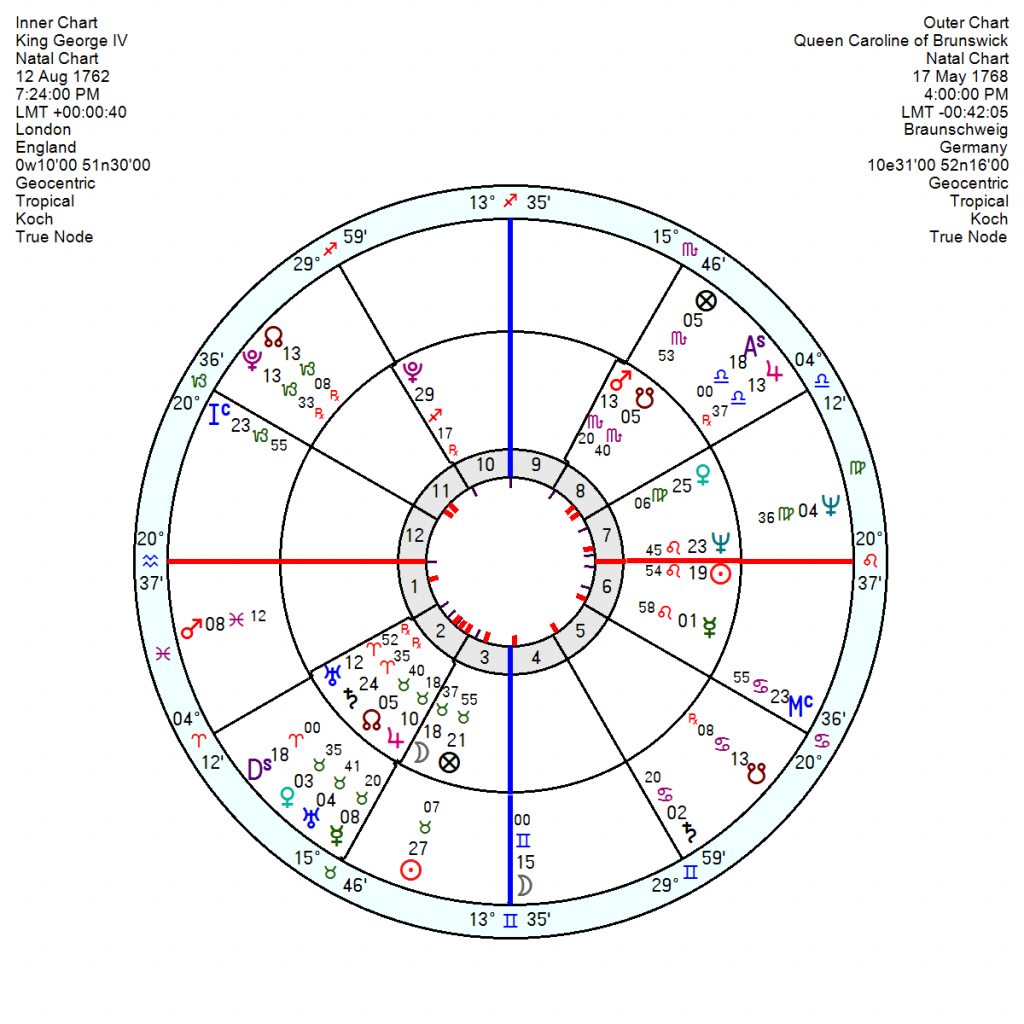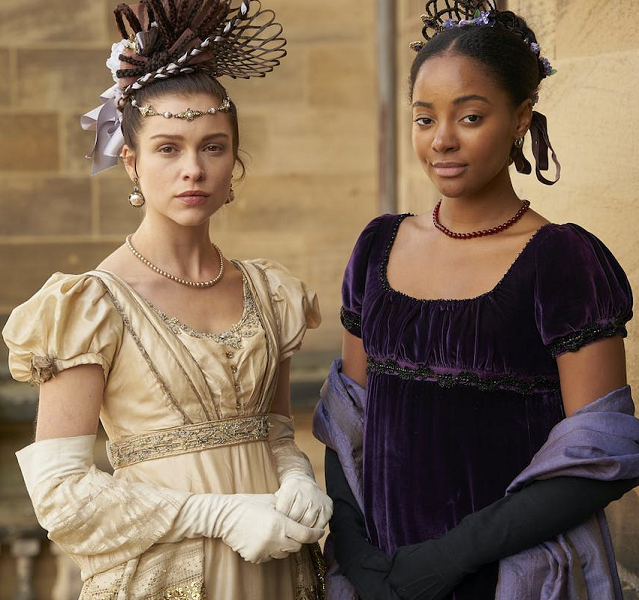


The world is going to hell in a handbasket – the worst it has ever been – is a frequent cry of every generation so it is illuminating to consider the gin-sodden, violent, addiction-addled times of Georgian England in the 18th Century. Jane Austen glossed over the dark side and left the impression of an elegant society run on a strict code of morality and etiquette. In reality murder and robbery were rife with no organised police force, consumption of gin amounted to an average six gallons per person every year and there were 40,000 prostitutes in London alone.
The Royal family of the time make the moderns like King Charles 111 look tame in comparison – with one of King George 111’s sons suspected of murder; and his heir/regent during his illness George 1V was “a libertine over head and ears in debt and disgrace” – debt seemingly amounting to millions of pounds in present day terms and ultimately addicted to laudanum.
The anti-Austen turbulence and grime is exposed in new ITV drama about Frannie Langton, a fictional former slave standing trial for murdering her master, George Benham, and his eccentric wife, Marguerite, with whom she was having a clandestine affair.
The Georgian period runs from the first Hanoverian King George 1 in 1714 up to 1830 or 1837 till Victoria took the throne, with amongst other things a distinct Georgian style of architecture based on the classical architecture of Greece and Rome, with ornament restrained and sometimes absent on the exterior.
I’ve been puzzling about what the astrological markers are since it started on a triple conjunction of Pluto, Saturn, Uranus in Virgo and Neptune in early Taurus and finished with Pluto in Aries and Neptune in Capricorn. So there were a fair few signs the outer planets moved through. Though Pluto, Uranus, Saturn were heading for a triple conjunction in Aries/Taurus by 1848 – so the Georgian period was sandwiched between two rare triple conjunctions.
George IV, 17 August 1762 7.24pm London led a riotously unrestrained and scandal-strewn life, illegitimately marrying his mistress, then being forced to marry Caroline of Brunswick by his father in exchange for his debts being settled, which turned out to be a disastrous union. She was immensely popular and in later years he had to drop plans to divorce her though he did shut her out of his coronation. Complete mayhem.
He was a Sun Leo conjunct Neptune in a Fire Grand Trine to Pluto trine Saturn – attention-demanding, impulsive, confident, not humble, unshakeable self-belief. Plus an indulgent Moon Jupiter in Taurus in a short-fused opposition to a vengeful Mars in Scorpio.
Caroline, 17 May 1768 4pm Braunschweig, Germany, was a late Sun Taurus with her Uranus in Taurus triggering his Moon Mars so not a harmonious mix. Their relationship chart had a relentlessly hostile Mars Pluto opposition Sun Venus. That was never going to work.
It should make us grateful for the comparatively well-behaved Royals in situ at present.

i really enjoy these deep historical dives–thanks Marjorie and everyone who has contributed to the discussion! I have little to contribute myself except to note that King George IV’s Sun at 19 Leo is at the same degree as the Sun for the start of Hanoverian rule when George I acceded to the throne. I thought that was rather interesting!
It’s interesting how British historiography lumps together a time period that is usually divided in at least two, but in some cases three different periods in Continental Europe. In Finnish and Swedish historiography, the division is Age of Liberty starting in 1718 with the death of the last absolute monarch to that date Carl XII Gustaf, Gustavian Period starting 1772 with Gustaf III’s coup and then War of 1808-09 resulting to lost of Finland to Russia, which started Autonomy in Finland and Bernadotte early days in Sweden. Therefore, tying 1730’s and 1830’s together as one period is almost impossible.
In addition, I would say that in the Lutheran North, there was, since the 17th century, moral obligation for both the uppermost echelon, the Court, and the subjects to “behave”. I’m quoting Axel von Fersen, who was of the most prominent 18th century aristocratic family in Sweden, and literally beaten to death by an angry mob at funeral of Crown Price Carl August in 1810 not in small part for being part Gustavian fraction who were seen as the general population as immoral. Interestingly, Bernadottes who were “brought in” were completely French in their morals.
Lots of other things were happening apart from Jane Austen, royal hanky panky and gin drinking. There was a flourishing of Enlightenment scholarship, an Agricultural Revolution and the start of the Industrial Revolution. Much of the canal system which helped drive the economic changes was built in that era. In the same century Britain lost one Empire acquired another one, fought wars with practically everybody and built a navy that dominated the globe at least until the beginning of the 20th century.
It’s also worth considering the enormous power of the East India Company during the 18th century. We talk about the power and wealth of corporations today, but none of them have their own private army, as the East India Company did. Their rule (although trade was earlier) in India began in 1757, with Pluto in Sagittarius square Uranus in Pisces. Saturn was in Aquarius, and Neptune in Leo. The Company had begun in 1600 with Uranus in Taurus square Saturn in Scorpio – echoes of today perhaps?
Their reach extended to Southeast Asia and Hong Kong, and they were at one point the largest corporation in the world. The French, Dutch, Portugese, Danish, and Swedish all had significant interests in the East too, but these are eclipsed by the East India Company’s activities.
All those imports had an effect on 18th century fashions, design, social trends such as tea drinking, and so on. People were enjoying curries in London restaurants by around 1773, and there were recipes for domestic cooks to prepare from around 1747.
I sometimes think that without the rapacious East India Company, British history of empire might have been very different.
Have you seen Tom Hardy’s ‘Taboo’, Jane? Though it’s set in the early 19th century, it portrays the East India Company in a less than flattering light!
No, thanks VF, I haven’t seen it – I will check it out. I do believe the East India Company is such a huge influence on our colonial history. Their private army was bigger than the British Army of the time. They built the East India and West India docks in London too. Interesting to consider how we’re influenced nowadays by huge global companies, but this is nothing new!
‘…… it portrays the East India Company in a less than flattering light!’
Elephant in the room is their involvement in the slave trade majorly, which should have been included in their list of accolades above.
Jennifer E – I hadn’t intended ‘accolades’ at all! Just a few facts about this ruthless corporate operation, in the loose, wider context of Georgian England. They were a mercantile and military colonial corporate power, affecting many aspects of society and history here and elsewhere in a way that’s quite shocking to consider. They trafficked slaves from Africa to India and Indonesia, to work for the Company. And I think also trafficked Asian slaves. The Dutch East India company was also heavily involved in the Indian Ocean slave trade. As were Arab and Portugese traders, and others.
Their illegal dealings in opium were one of the reasons for the Opium Wars in the 19th century as well. It’s an endlessly complicated history, and a warning to us today too.
The East India Companies. Plural, not singular.
The Dutch East India Company (the VOC) is, according to some at least, the largest joint stock company (as we understand it nowadays) ever in history, being larger, with more employees and assets than even the English/British East India Company.
The East India Company was the primary culprit of the Irish Famine.
Nice one, Marjorie!
Many thanks.
Interesting article . The hardships in that time seemed more authentic and the air quality must have been a lot better than now . I follow vedic astrology too, we’re in kali yuga the most degraded age of hypocrisy .
@Jackie, as for air quality, those splendid sunsets painted by artists of the period were not caused only by massive volcanic eruptions, but people burning coal and wood for warmth. London already had 1 million inhabitants in 1800, on a much more constrained area that nowadays, and must have been truly atrocious. But micro particle levels from the period in Arctic ice sediments still remaining are not insignificant.
Not to speak of what was in the air inside – funnily enough poorer people with fewer lamps and candles to burn for light might have been better off health wise than the rich, given they were not exposed to so many fumes. And in fact, it’s not difficult to find people who lived well into their 80’s in the church books of poor, Rural Finland where my ancestors were.
Here’s ‘London’ by William Blake, written in 1794. We’ve just missed his birthday, 28th November 1757, in London. Neptune in Leo, conjunct Mars, trine Pluto in Sagittarius. Also had Saturn in Aquarius, 16 degrees.
I wander thro’ each charter’d street,
Near where the charter’d Thames does flow.
And mark in every face I meet
Marks of weakness, marks of woe.
In every cry of every Man,
In every Infants cry of fear,
In every voice: in every ban,
The mind-forg’d manacles I hear
How the Chimney-sweepers cry
Every blackning Church appalls,
And the hapless Soldiers sigh
Runs in blood down Palace walls
But most thro’ midnight streets I hear
How the youthful Harlots curse
Blasts the new-born Infants tear
And blights with plagues the Marriage hearse
Thank you, Marjorie. Always loved the gritty, non-Austen 18th century, growing up with a father who collected 18th cartoons and who had any number of lavishly illustrated books depicting the satirist’s view on the century in all its rambunctious glory. (Probably not suitable for a child, since censorship of graphic obscenity in 18th century cartoons was far more loose than it is today – today’s cartoonists would simply not have got away with it!). Hogarth’s ‘Gin Lane’ and ‘Beer Street’ are well-known, but for an equally gritty lens on the latter half of the century, see the work of cartoonist James Gillray (b 13/8/1756 who also had a Sun/Neptune conjunction in Leo and Venus on Regulus) and his unforgiving take on the British royal family under George II & III, with the unpopular Prince Regent (later George IV) depicted as an obese glutton and profligate who has bankrupted the country due to his immense debts and spending, or Queen Charlotte as a naked, snake-haired sea monster. Or Thomas Rowlandson (b 14/7/1756 also with Neptune in Leo and Benus on Regulus) whose erotica really sets the template for British attitudes towards sex with his nudge-nudge visual double-entendres.
But above all I would have loved to have been one of those London ladies who spent their Sunday afternoons hobnobbing at gin parties with their female friends!
Yes, thank you Marjorie. And agree VF – it is a fascinating period. 18th century history is certainly far from the polite world of Jane Austen – which only covers a tiny, privileged section of society. As does much of what’s depicted as Victorian society, ignoring a huge chunk of the population or presenting them as the ‘huddled masses’. Both eras are full of freely available drugs, alcohol, and prostitution. Amazing amounts of 18th century smuggling and piracy went on, often involving the ‘gentry’ or even the clergy. Plus numerous highwaymen and a few highwaywomen too.
I found, when looking at some of my family history, that bigamy and even ‘trigamy’ was rife as well – divorce almost impossible, so it was a simple if risky solution. As was simply pretending to be married, even if already married to somebody else.
We now have a huge imbalance between wealth and poverty once again. And currently, what seems to be a failing police and crown prosecution situation. Perhaps all the sign changes ahead will usher in change for the better, or are we simply reverting to what seems to be the chaotic default setting for human society?
Jane, indeed it’s the century which saw the discovery of Uranus which was the first planet to be observed using a telescope and whose astrological meaning is tied up with technology and social change and progress. It’s no surprise to see how non-conformist, non-hierarchical faiths such as Quakerism and Methodism feature so prominently in this century which give and sense of brotherhood to those huddled masses and which in the 19th century go on to found successful business models which provide housing and social structure for their employees.
Sorry I should have said Uranus was the first planet to be discovered using a telescope.
@Virgoflake, Jane Austen wrote in what was the tailend of the period. French Revolution shifted attitudes to more conservative, traditional direction in all countries revolutionaries were not successful in. I quote Sweden, because obviously Finnish-Swedish history is the one I’ve done a deep dive into, but the late 18th century is actually the period we start to have ample written cultural historic records from people not from the upmost echelons or court records. Anyhow, most famous manifestation of this would have been birth of Romanticism, which spread incredibly fast, really, from German speaking areas.
Yes, I associate the beginning of the Romantic period with Pluto’s ingress into Pisces in 1797, just as the French Revolution is drawing to a close and the rise of Napoleon. As well as the Gothic movement in literature since Neptune was in Scorpio at the end of the century. In fact Gillray satirises this trend with his 1802 “Tales of Wonder”, which shows a group of fashionable women sat around a table with terrified expressions while one reads aloud. A cooy of ‘The Monk’ lies on the table. (Jane Austen does the same in ‘Northanger Abbey’).
But it’s interesting to see how this period manifested in other European countries such as Sweden, as you say. For the Enlightenment elsewhere, Catherine the Great for example makes huge and sweeping reforms in Russia during this century and dies in 1796 which marked an end of an era of modernisation for that country.